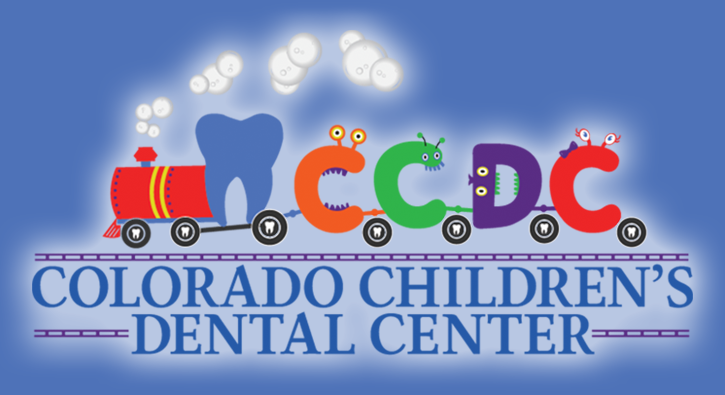The CCDC Blog
Vacation Dental Tips
By Brianne Jones, RDH
Vacation Ready!
Â
Vacation is always sooooo exciting, but the to-do list before leaving can be quite overwhelming. The last thing you want to worry about while on vacation is your kid’s teeth. With that said, you must be prepared for any sticky situation that may arise. Below are some helpful hints to get you out the door and on your way, with a HEALTHY and HAPPY smile!
*Have your routine dental check-up scheduled or done before you leave on vacation! This helps give you peace of mind knowing that your kid’s teeth are cavity free and there are no foreseen problems ahead.
 *Have your dentists phone number/contact information handy (business cards) in case of emergency! Many pediatric dentists have an emergency line and can be reached 24/7.
Â
Â
*Forgot to pack a toothbrush?! It’s ok…until you can find one, put a small amount of toothpaste on a washcloth and brush as normal!
Â
Â
*Keep those germ bugs away! Pack and store your toothbrush in a Ziploc or be sure it has a cover for the bristles, as germs and whatever else may make their way into your mouth. Yuck!
Â
Â
*According to the ADA, chewing sugarless gum can help relieve ear pressure during a flight – and help keep cavities at bay on vacay. Research shows that chewing sugarless gum for 20 minutes after a meal can help prevent cavities. That’s because it gets saliva flowing, which helps wash away cavity-causing bacteria.Â
Â
Â
*When in doubt, brush with bottled water! It may seem as though you don’t swallow enough water for it to matter, but even the smallest amount of contaminated water can leave you feeling ill!
Â
Last, get back on track to good brushing and flossing habits as soon as vacay is over!Â
Toddlers and Brushing!
How to get that cute kiddo to brush!
By Brianne Jones, RDH
Toddlers and Brushing!
Getting a toddler to brush can be quite tricky...here are some fun tips and tricks to help keep their teeth on the healthy track!Â
One of those necessary life skills every child needs to learn is brushing his or her teeth. Helping your child get in the habit of brushing twice a day for two minutes is no small feat, but a little creativity can go a long way when it comes to his or her long-term dental health.
Have 4 Minutes of Fun
Don’t just set a timer and supervise – make brushing twice a day for two minutes an event! Crank up your child’s favorite song and have a two-minute dance party. Videos or brushing apps may also make that time fly by. (Older children might enjoy the videos on 2min2x.com, and younger brushers might like these.) Try reading a 2-minute story using all your best voices. Whatever you do, get creative and switch things up so brushing time is always a good time.
Start a Routine and Stick to It
You may be tempted to let your child skip brushing after a long day or during times when your normal schedule is off (like vacation), but keep at it. The more second nature brushing becomes the easier it will be to make sure your child is brushing twice a day for two minutes.
Reward Good Brushing Behavior
What motivates your child? If its stickers, make a reward chart and let him add one every time he brushes. If he’s a reader, let him pick out the bedtime story. Maybe it’s as simple as asking to see that healthy smile, saying “I’m so proud of you†and following up with a huge high five. Â
Characters Count
Who is the character your child can’t get enough of? Many children’s shows and books, including Sesame Street, have stories about brushing. Watch and read them together, so when it’s time to brush you can use that character as a good example.
Make Up a Story
Haven’t found a story or character to inspire your child? Make up your own. Your child just might be the only superhero who can brush away the bad guys that cause cavities.
Go Shopping
Let your child pick out his own toothbrush and toothpaste. (We recommend ones with the ADA Seal of Acceptance.) Choosing a character toothbrush might make brushing more fun, and fluoride toothpastes come in a variety of flavors and colors.
Sing A Fun SongÂ
Your children learn from you, so set a good example. What's your childs favorite song?! Maybe try making up a fun brushing jingle or play it on your phone or ipad while they brush. Get them to brush the entire length of the song!
Â
Reference:Â https://www.mouthhealthy.org/en/babies-and-kids/fun-ways-to-encourage-kids-to-brush
Dental Health Month
FAQ
By Brianne Jones, RDH
Early Dental Care
ÂIt's February and we all know what that means...DENTAL HEALTH MONTH!!! Below are some of the frequently discussed topics and what Dr. J's view on them is!
Â
A Child's First Dental Visit
Dr. Jones recommends scheduling your child’s first dental visit around his/her first birthday. The most important part of the visit is getting to know and becoming comfortable with a doctor and his staff. A pleasant, comfortable first visit builds trust and helps put the child at ease during future dental visits. Children should be encouraged to discuss any fears or anxiety they feel.
Infant's New Teeth
The primary, or “baby,†teeth play a crucial role in dental development. Without them, a child cannot chew food properly and has difficulty speaking clearly. Primary teeth are vital to development of the jaws and for guiding the permanent (secondary) teeth into place when they replace the primary teeth around age 6.
Teething
Normally the first tooth erupts between ages 6 to 12 months. While your baby is teething, it is important to monitor your child's teeth for signs of baby bottle decay. Examine the teeth, especially on the inside or the tongue side, every two weeks for dull spots (whiter than the tooth surface) or lines. A bottle containing anything other than water that is left in an infant’s mouth while sleeping can cause decay. This happens because sugar in the liquid mixes with bacteria in dental plaque, forming acids that attack the tooth enamel. Each time a child drinks liquids containing sugar, acids attack the teeth for about 20 minutes. During sleep, the saliva flow significantly decreases and liquids pool around the child’s teeth for long periods, covering the teeth in acids. Our office is dedicated to fighting baby bottle tooth decay. Let us know if you notice any signs of decay or anything unusual in your child’s mouth.
Â
Good Diet and Healthy Teeth
Â
The teeth, bones and soft tissue of the mouth require a healthy, well-balanced diet. A variety of foods from the five food groups helps minimize (and avoid) cavities and other dental problems. Most snacks that children eat cause cavities, so children should only receive healthy foods like vegetables, low-fat yogurt and cheeses, which promote strong teeth.
Colorado Children's Dental Center
Keeping Kids Teeth on the Healthy Track!
Serving the Parker, Aurora, Highlands Ranch and Centennial Community!Â
Sealants
What are they and why...
By Brianne Jones, RDH
Frequently Asked Questions About Sealants
When you visit your child’s dental office for a regular checkup, a common treatment that they may recommend for your children are sealants. There can be many questions associated with sealants, so we hope that we can answer some of the most common questions here.
What are sealants?
A sealant is a thin plastic coating that is applied to the grooves on the chewing surface of teeth. The chewing surface is the most common area of teeth to get decay, and by placing the sealant onto the teeth, it helps protect them from decay. The sealants protect the grooves of the teeth by keeping food particles from sitting there. Although it does not guarantee that your child will not get a cavity, it dramatically reduces the risk of decay.
Which teeth will get the sealant?
Permanent molars benefit the most from sealants because they are the most susceptible to decay on the chewing surface. The first set of molars usually comes in around age six and the second set comes in around age 12. Ideally, the sealants should be applied when the molars first erupt so that there is not time for decay to occur.
Will I be able to see the sealant?
Sealants can only be seen when you are looking at your children’s teeth up close. They are tooth colored material, so they are difficult to see even when you’re looking for them, and they definitely can’t be seen when the child is talking or smiling.
How are sealants applied?
Applying sealants is quick and easy, and will be completed by one of our assistants. No numbing is needed, but we do recommend using laughing gas while the sealants are being applied to help relax your child and lower their gag reflex. No tooth structure is removed when applying the sealant, so there is no drilling. After the tooth is cleaned, a special gel called etch is applied to the chewing surface of the tooth. This prepares the tooth so that the sealant will be able to stick to it in the most effective way. After the gel has been on the tooth for a few seconds, it is washed off with water and then the tooth is dried with air. Then, the sealant is painted into the grooves on the tooth. A blue light is then used to change the sealant from being soft and malleable, into a hard, tooth like material. It only takes a few minutes to do each sealant, however the tooth must be dry. To achieve this, an assistant may place cotton roles under the tongue and cotton on the cheek, or a plastic device that keeps the patient’s tongue, cheek and lips away from the tooth.
How long does a sealant last?
Sealants last between five and ten years. It is possible for a sealant to come off, but we will check them at each of your child’s regular dental checkups. Sealants can be reapplied if they do come off.
Do sealants replace the need to use fluoride to​​prevent cavities?
No, fluoride, like that found in toothpaste and community water supplies, acts in a different way than sealants to protect teeth from cavities. Fluoride acts both systemically to strengthen teeth before they have erupted, and topically where it is incorporated into the surface of the teeth to make them more decay resistant. Sealants prevent decay by keeping food and germs out of the grooves of the teeth. Although fluoride and sealants work together to reduce cavities, one is not a replacement for the other. Sealants are just one part of your child’s entire preventative dental program. Remember that it is important to include twice Âdaily brushing, once Âdaily flossing, fluoride and smart food choices in order to keep your children cavity free!Â
Sources: http://www.cdc.gov/oralhealth/publications/factsheets/sealants_faq.htm





